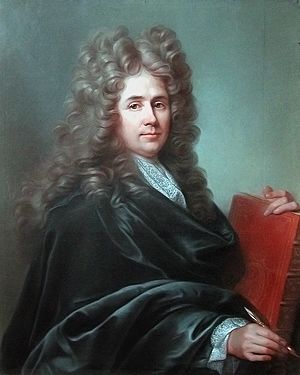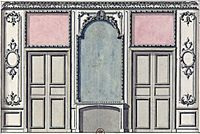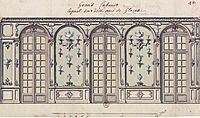Robert de Cotte facts for kids
Robert de Cotte (born 1656 – died 15 July 1735) was a French architect. He was in charge of designing royal buildings in France starting in 1699. He helped bring in the first ideas of the Rococo style, which was a very fancy and decorative art style. Robert de Cotte first learned from Jules Hardouin-Mansart, who was also a famous architect. Later, they became family and worked together. After Mansart passed away, de Cotte finished his projects, like the royal chapel at the Palace of Versailles and the Grand Trianon.
Contents
Robert de Cotte's Life and Work
Robert de Cotte was born in Paris. He started his career building things with stone for big royal projects between 1682 and 1685. He then became a member of the Académie royale d'architecture, which was a special group for architects, and an architect for the King's Court.
Early Career and Important Roles
After traveling in Italy for six months (1689–1690), de Cotte became the director of the Manufacture des Gobelins. This was a famous factory where beautiful tapestries and royal furniture were made. He even designed fancy metal railings there. His many drawings for these projects are still kept today at the French National Library.
In 1699, when Mansart became the head of all royal buildings, de Cotte became his second-in-command. He was in charge of all the drawings, materials like marble, and supplies for royal factories. He also managed how contractors were chosen.
Leading Royal Building Projects
From 1708, Robert de Cotte became the Premier architecte du Roi, meaning the King's Chief Architect. He was also the director of the Académie royale d'architecture. He was in charge of the Bâtiments du Roi, which was the office that managed all royal construction. This office was set up like a modern architectural firm, with different people for different jobs.
During the last years of King Louis XIV, there wasn't a lot of new building at Versailles. The main project was the Chapel, which de Cotte finished in 1710. The decorations for the Chapel were designed by Pierre Lepautre, who some people call the "father of the Rococo" style.
Designing Buildings in Paris
De Cotte also worked on many projects in Paris. His name is on the first plans for the Place Vendôme (1699), a famous square. His team built many private mansions, called hôtels particuliers, in Paris. These included the Hôtel de Lude (1710) and the Hôtel d'Estrées (1713).
He also led the team that updated the Hôtel de Vrillière in 1714-1715 for the King's son, the comte de Toulouse. A very special part of this project was the grand staircase and the Gallery (1718–1719), which helped make de Cotte famous.
Work During the Regency and Beyond
When King Louis XV was a child, France was ruled by a regent (someone who rules for a young king). This period, called the Régence, was when de Cotte was at his most active. He was one of the most important architects in Europe. He had a very skilled team and was able to take on private projects. His son, Jules-Robert de Cotte, helped him in his later years.
During this time, de Cotte was responsible for the Hôtel de Conti (1716–19) and the Hôtel de Bourvallais (now the French Ministry of Justice).
International Projects
De Cotte's team also worked on projects outside France. In Bonn, Germany, his team designed parts of the Poppelsdorf Palace (from 1715) and updated the inside of the Electoral Palace (1716–1717). They even designed a new wing called the Buen Retiro.
From Spain, a princess asked for his advice on updating her Château de Chanteloup and the queen's rooms in the royal palace in Madrid. An octagonal room was even built in Paris under de Cotte's supervision and then sent to Madrid to be installed. At La Granja, one of de Cotte's assistants helped design the gardens. For the cardinal de Rohan, de Cotte designed decorations for the Château de Saverne in Alsace.
After Pierre Lepautre died in 1716, de Cotte worked with the sculptor François-Antoine Vassé for new decorative ideas. Vassé was responsible for many creative designs in de Cotte's later works. Robert de Cotte passed away in Passy (which is now part of Paris).
See also
 In Spanish: Robert de Cotte para niños
In Spanish: Robert de Cotte para niños




